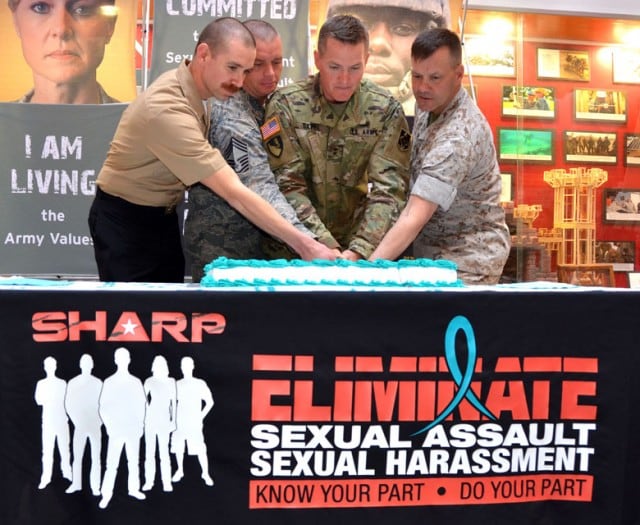By all metrics, the military’s sexual assault problem has only grown worse even with more resources committed to fight it – especially at military service academies, which recorded the highest rate of sexual assault since 2006, when the Defense Department started measuring the problem.
“These numbers are extremely disappointing and upsetting. I mean, there’s there’s really no other way to see it,” said Beth Foster, the DoD’s executive director of force resiliency, describing the latest Pentagon progress report Friday.
Numbers in the overall military have also continued to rise. The latest annual DoD sexual assault report showed the highest prevalence of incidents against women in the services since tracking began, with 8% of women and 1.5% of men experiencing unwanted sexual contact, second only to 1.8% in 2006.
Female cadets and midshipmen at the Air Force Academy and Naval Academy saw the biggest rise in incidents, 22% and 23% respectively in 2022. At West Point, the numbers were up 18%, according to the report. Rates also rose for men at the academies, hovering around 4% for all three, continuing the rising trend of unwanted sexual contact at military service academies. Over that time period, the sharpest rises in reported sexual assault were in female Naval Academy midshipmen in 2010 and 2018, 16.5 in each of those years.
“This report confirms what many of us have feared — that the scourge of sexual assault in our military is only getting worse,” Josh Connolly, vice chair of advocacy group Protect Our Defenders said in a release Friday. “This report is particularly troubling because it exposes a dramatic increase in the prevalence of this abhorrent behavior at the institutions that are responsible for shaping the military’s future leaders.” Connolly blamed “outdated training and attitudes.”
In addition to tracking reported incidents, the Pentagon alternates each year between surveys, or in-person focus group sessions at the academies, aimed at capturing further data on incidents that were not formally reported, helping official created an estimated overall rate.
In this past year’s survey, 155 reports of unwanted sexual contacts accounted for just under 14% of an estimated 1,100 overall incidents, with only 21.4% of women and 4.4% of men reporting their assaults.
Sexual assault incidents continue to go mostly unreported, said Nate Galbreath, deputy director of DoD’s Sexual Assault and Prevention Office. In the active force, he added, the reporting rate is between 20% and 30%.
In response to the report, Defense Secretary Lloyd Austin is directing a handful of measures, including site visits to each academy to evaluate policies and training/education. The Naval Academy’s visit wrapped up Friday, with West Point next on the schedule.
RELATED

The academies will also have to improve their policies to keep alleged perpetrators and survivors apart following an incident report.
The memo specifies that separation should be enforced “to the extent practicable.” That generally means making sure students can be reassigned to avoid shared classes between alleged perpetrator and survivor, Galbreath said, but may not guarantee that they don’t run into each other in student housing, in dining facilities or at mandatory formations.
“It would be very difficult to create situations where they never run into each other,” he added. “And I think this is why we work very closely with survivors to brief them ahead of time that we’ll take every step that we can, but we also give them a safety plan that should they feel threatened, should they feel concerned, that they have people to turn to and also steps that they can take to address the situation.”
In addition to reviewing existing training and policies, the report calls on the academies to look at their existing policies for what might be working.
Freshmen were the least likely to experience an assault, according to the data, or 13.5% of women and 2.8% of men, likely because their schedules are so regimented, and they have little freedom to go off the campus unsupervised, when incidents of assault may be more likely to occur. That number roughly doubled during the sophomore years, to 27.8% for women and 5.3% for men, before decreasing somewhat during junior and senior years.
In general, first-year students have highly regimented schedules and little freedom to go off campus or spend time unsupervised. There are also strict rules prohibiting dating between freshmen and older students.
“Forbidding any contact is probably not the right answer,” said Ashlea Klahr, DoD’s director of health and resilience research at the Office People Analytics. “But what we have to teach our cadets and mids is, how can you date safely? How can you have healthy relationships? What does this look like? And that’s a lot of what our prevention work is focused on.”
Meghann Myers is the Pentagon bureau chief at Military Times. She covers operations, policy, personnel, leadership and other issues affecting service members.





